Happy New Year! Welcome to 2024!
It’s that time of the year where we reflect on the year gone by and I take some time to evaluate what I did and where I want to go. One of the things I like to do the most is to recap all the books I read each year. A practice that I have been doing since 2019, this year I will summarize and review each book in a minute.
In 2023, I read a total of 10414 pages across 51 books including audiobooks. I read books on feminism, communication skills, fiction among others and of course I followed my ritual of listening to Stephen Fry and Jim Dale’s rendition of the Harry Potter audiobooks.
I read much more fiction this year as I was trying to consciously take a break from non-fiction books during the second half of the year. I listened to the Theodore Boone series by John Grisham towards the end of the year and revisited some of my childhood favourite books by Roald Dahl.
Let’s dive in!
The Appeal by John Grisham
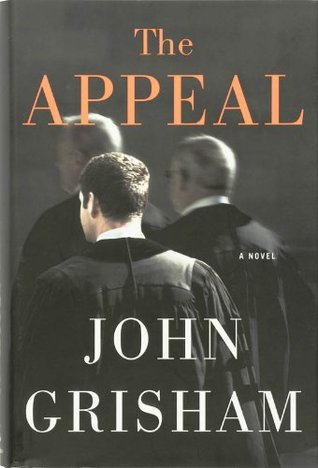
John Grisham’s legal thriller, “The Appeal,” takes readers on a rollercoaster ride through the corrupt underbelly of American politics and the power of big corporations. Set in Mississippi, the story revolves around a high-stakes legal battle with political implications that could change the course of justice.
At the heart of the novel is the story of a chemical company, Krane Chemical, whose negligence results in a small-town family’s tragic loss. As they seek justice through the courts, the legal drama unfolds, exposing the ruthlessness of corporate interests and the lengths to which they are willing to go to protect their profits.
Grisham delves into the complexities of the legal system, highlighting the influence of money and politics on the judicial process. The novel underscores the idea that justice is not always blind, as the wealthy and influential can manipulate the system to their advantage.
The characters in “The Appeal” are well-drawn, with each playing a crucial role in the unfolding drama. Readers will find themselves immersed in the struggles of the underdog, as they root for justice to prevail against all odds.
The novel also raises important questions about the role of money in politics and the ethical dilemmas faced by those who seek to balance their personal interests with the greater good. Grisham’s storytelling prowess keeps the tension high, making “The Appeal” a gripping page-turner that will keep readers engaged until the very last page.
In summary, “The Appeal” by John Grisham is a thought-provoking legal thriller that explores the corrupting influence of money and politics on the American justice system. With its well-developed characters and gripping narrative, it serves as a compelling reminder of the power of the legal system and the importance of fighting for justice, no matter the odds.
The Last Juror by John Grisham
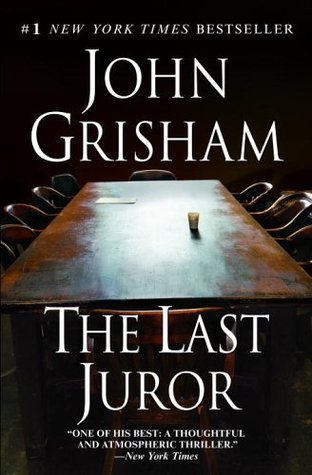
In “The Last Juror” by John Grisham, we step back in time to the 1970s, where the small town of Clanton, Mississippi, holds its own secrets and simmering tensions. At the heart of the story is Willie Traynor, a spirited newspaper owner eager to make a mark in the local journalism scene.
Willie’s life takes an unexpected twist when he becomes a juror in the trial of Danny Padgitt, a member of a notorious and ruthless family. Danny is accused of a heinous crime, the rape, and murder of a young widow named Rhoda Kassellaw. As the trial unfolds, Grisham masterfully captures the drama, the raw emotions, and the moral dilemmas faced by those in the jury box.
The verdict ultimately sends shockwaves through Clanton, setting off a chain reaction of events that reverberate far beyond the courtroom. Themes of justice, morality, and the complexities of the legal system are at the forefront, as the characters grapple with their roles in a society still haunted by racial tensions.
“The Last Juror” also examines the power of the media, embodied by Willie Traynor, in shaping public perception and influencing the trial’s outcome. Willie’s own growth and transformation as he navigates the challenges, threats, and ethical quandaries that arise due to his involvement in the trial add depth to the narrative.
John Grisham skillfully weaves together elements of courtroom drama, social commentary, and personal development, making “The Last Juror” a gripping tale that lures readers into the depths of a small Southern town’s moral struggle.
The Broker by John Grisham
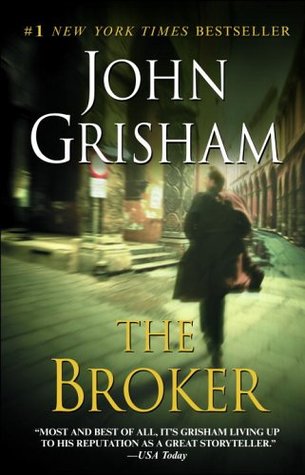
In “The Broker” by John Grisham, we are thrust into the shadowy world of international espionage and intrigue. The story revolves around Joel Backman, a once-powerful Washington insider who is now serving a prison sentence for illegal activities related to classified government information.
Joel’s life takes a sudden turn when he is unexpectedly pardoned by the outgoing President, who believes that Joel possesses valuable intelligence that could impact global politics. Freed but with a new identity, Joel is exiled to Italy under the watchful eye of the CIA.
As Joel attempts to adjust to his new life, he must navigate the treacherous waters of international intelligence agencies, foreign governments, and dangerous adversaries. Themes of power, betrayal, and the consequences of one’s actions come to the forefront as Joel is forced to confront the mistakes of his past.
Grisham’s storytelling prowess shines as he explores the complexities of the intelligence world, where trust is a rare commodity and loyalties are often shifting. “The Broker” is a thrilling journey through the corridors of power, filled with unexpected twists and high-stakes suspense.
Throughout the novel, Grisham keeps readers on the edge of their seats, unraveling a web of secrets and hidden agendas that culminate in a riveting climax. “The Broker” is a tale of redemption, survival, and the enduring quest for a second chance in a world where the stakes couldn’t be higher.
On Target: Shooting With Confidence by Dr. Fuller and Trey Lanier

In “On Target: Shooting With Confidence,” Dr. Fuller, a sports psychiatrist, joins forces with Trey Lanier, an expert competitive marksman and hunter, to create a comprehensive guide for strengthening hunting and shooting skills. This collaboration is more than just a manual; it’s a transformative journey that blends mental and physical training with a profound emphasis on the responsible and safe use of firearms.
The book opens a window into the world of shooting and hunting, where precision and focus are paramount. Dr. Fuller, known for his psychotherapy expertise, shifts his attention to the psychology of shooters, unlocking their untapped potential. Trey Lanier, on the other hand, brings his years of experience as a competitive marksman and hunter to the forefront, ensuring that readers benefit from a blend of professional insights and practical wisdom.
Themes Explored in “On Target: Shooting With Confidence”:
- Mental Conditioning: At the core of this book lies the concept of mental conditioning. Dr. Fuller introduces a reflex conditioning technique designed to create a focused, uncluttered, and dynamic mindset for shooting enthusiasts. The authors emphasize that the mental aspect of shooting is as crucial as the physical, if not more so.
- Safety and Responsibility: The book champions the responsible and safe use of firearms. In a world where firearm safety is of paramount importance, the authors underscore the need for ethical and careful handling of firearms, making it an essential theme throughout the book.
- Adapting to Change: The world of shooting and hunting has evolved over the years. From using shotguns for off-season training to the rise of competitive shooting sports, the authors highlight the changing landscape of these activities. This adaptation is particularly relevant as fewer people engage in traditional hunting, while recreational shooting gains popularity.
- Outdoor Sportsmanship: “On Target” celebrates the spirit of outdoor sportsmanship, especially in the context of hunting. The authors draw from their experiences in south Georgia, a region known for its abundant wildlife and land conservation. Wild Bobwhite quail, a symbol of the area, takes center stage as a reminder of the rich tradition of hunting and shooting.
- Community and Passion: With over 50 million recreational shooters in the United States alone, the book recognizes the thriving community of shooting enthusiasts. It underscores the passion that drives individuals to pursue excellence in this popular pastime.
In “On Target: Shooting With Confidence,” Dr. Fuller and Trey Lanier offer readers more than just shooting skills; they provide a holistic approach to becoming better shooters and responsible firearm owners. Their blend of expertise, practical guidance, and a deep appreciation for the traditions of shooting and hunting makes this book a valuable resource for both newcomers and experienced marksmen.
Build a Brilliant Bug Out Bag and Beyond!: Essential Prepper’s Kit to Keep Your Family Alive After a Disaster by Zac Lasson
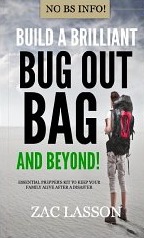
In “Build a Brilliant Bug Out Bag and Beyond!” by Zac Lasson, readers are introduced to a practical and comprehensive guide for preppers—a guide that demystifies the overwhelming world of disaster preparedness. This book is a beacon of clarity in a sea of information overload, focusing on the essential starting point for any prepper: the bug out bag.
Lasson’s approach is clear and methodical, making it accessible to beginners and experienced preppers alike. He illuminates the concept of “bugging out” and underscores the importance of having a bug out bag, complete with a 72-hour survival kit, ready to go. The author’s step-by-step guidance ensures that anyone can assemble a quality bug out gear kit, regardless of their level of preparedness.
Key Themes and Points Explored:
- The Bug Out Bag Essentials: The book delves into the core components of a bug out bag, detailing the specific items that should be included. Notably, Lasson emphasizes that these items need not break the bank, making preparedness accessible to all.
- Individual Preparedness: Lasson highlights the importance of every family member having their own bug out bag. Disasters are indiscriminate, and ensuring each family member’s safety and survival becomes paramount when help is uncertain.
- Critical Decision-Making: The author guides readers on key decisions, such as when to bug out, where to go, and how to select the right bug out bag. These decisions are crucial in ensuring a successful bug out scenario.
- Survival Essentials: The book covers vital aspects of survival, including water, food, medical supplies, personal items, and education. It provides insights into the quantities of water needed, the significance of certain bug out kit items, and the importance of survival education.
- Technology and Caches: Lasson discusses the role of technology in disaster preparedness and how to make effective use of caches to enhance survival and comfort.
- Checklists for Assurance: Each section of the book includes a practical bug out checklist, ensuring readers have all the necessary kit assembled.
Throughout the book, Lasson addresses critical questions, such as the inadequacy of official water guidelines, the importance of safe locations, recommended foods, and optimizing the use of caches.
In essence, “Build a Brilliant Bug Out Bag and Beyond!” is a concise, one-hour read that distills the essence of bug out bags and disaster preparedness without unnecessary filler. It equips readers with the fundamental knowledge and tools required to embark on their prepping journey. Zac Lasson’s guide is a beacon of practicality in the world of prepping, empowering individuals and families to be ready for whatever challenges may arise.
Why I Write by George Orwell
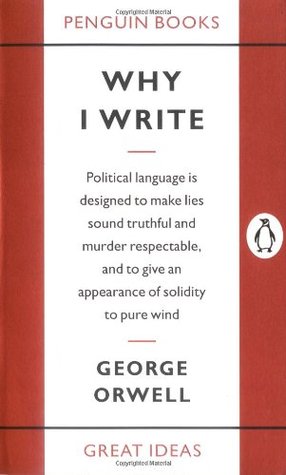
In “Why I Write” by George Orwell, the reader is invited into the intricate world of an author’s motivations, a world that pulses with introspection and passion. This thought-provoking essay is a literary journey through the mind of one of the 20th century’s most influential writers, where Orwell candidly reveals the driving forces behind his craft.
The central question that Orwell explores is deceptively simple yet profound: Why do writers write? As he peels back the layers of his own experiences and convictions, he distills his motivations into four primary categories:
- Sheer Egoism: Orwell acknowledges the presence of egoism in his writing. He describes a desire for recognition, a yearning to be heard and remembered. This unvarnished self-awareness is a theme that resonates with many creative minds.
- Aesthetic Enthusiasm: The pursuit of beauty, clarity, and the sheer joy of crafting words into meaningful prose is another motivation Orwell highlights. His commitment to precision and honesty in language underscores the importance of aesthetics in the writing process.
- Historical Impulse: Orwell delves into the compulsion to document and bear witness to the world’s events. His experiences as a journalist during the Spanish Civil War and World War II fueled his dedication to capturing the truth as he saw it.
- Political Purpose: Perhaps the most resonant theme in the essay, Orwell’s commitment to political purpose is a call to action. He discusses the role of writers in shaping and critiquing society, advocating for social justice, and challenging oppressive regimes. Orwell’s own works, such as “Animal Farm” and “1984,” exemplify this commitment to political literature.
Throughout “Why I Write,” George Orwell peels away the layers of his creative identity, revealing the intricate interplay of these motivations in his work. He masterfully navigates the reader through his personal journey, where his experiences as a soldier, journalist, and novelist converge into a compelling exploration of the writer’s psyche.
In a world where words hold immense power, “Why I Write” serves as an inspiring testament to the enduring significance of literature and the unwavering commitment of writers to their craft. Orwell’s essay transcends time and place, resonating with anyone who has ever felt the irresistible urge to put pen to paper and share their voice with the world.
Silent Power by Stuart Wilde

In “Silent Power” by Stuart Wilde, readers embark on a transformative journey into the realm of metaphysical exploration and self-discovery. This book is a compass that guides us through the uncharted territory of our own inner power, awakening us to the profound forces that shape our lives.
Wilde’s writing is a beacon of clarity in the often murky waters of self-help literature. He opens the door to the concept of “silent power,” an intangible force that resides within us, waiting to be harnessed. Throughout the book, Wilde delves into several key themes and points:
- The Power of Intuition: “Silent Power” champions the innate power of intuition and encourages readers to trust their inner guidance. Wilde emphasizes that intuition is not mere chance but a potent aspect of our silent power, a tool for making informed decisions.
- Energy and Vibrations: The book explores the idea that everything in the universe is energy, and our thoughts and emotions emit vibrations that shape our reality. Understanding and managing these vibrations can lead to positive changes in our lives.
- Manifestation and the Law of Attraction: Wilde introduces readers to the law of attraction—the idea that our thoughts and beliefs attract corresponding experiences. He offers practical techniques to manifest our desires through focused intention.
- Self-Reflection and Growth: “Silent Power” underscores the importance of self-awareness and personal growth. Wilde encourages readers to examine their beliefs, fears, and limitations, helping them break free from self-imposed barriers.
- Spiritual Connection: The book touches on the spiritual aspect of life, highlighting the interconnectedness of all beings and the potential for spiritual growth through silent power.
- Practical Exercises: Throughout the book, Wilde provides readers with practical exercises and meditations to tap into their silent power. These exercises offer a hands-on approach to understanding and harnessing this inner force.
Stuart Wilde’s “Silent Power” is a beacon of empowerment, encouraging readers to recognize and embrace their inherent potential. It challenges us to step beyond the boundaries of our comfort zones and explore the limitless possibilities that await within. With a clear and engaging writing style, Wilde invites us to embark on a journey of self-discovery and transformation, reminding us that our silent power is a force waiting to be awakened and harnessed for a more fulfilled and purposeful life.
The Alpha Male’s Guide to Mastering the Art of Body Language by Sean Lysaght
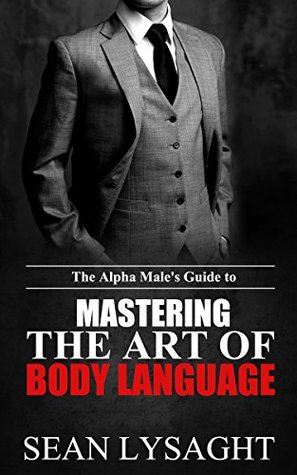
In “The Alpha Male’s Guide to Mastering the Art of Body Language” by Seán Lysaght, readers are introduced to the intricate world of non-verbal communication and how it plays a pivotal role in personal and professional success. This guidebook aims to empower individuals by honing their body language skills to project confidence, charisma, and authority.
Lysaght begins by highlighting the significance of body language in our daily interactions, emphasizing that it often speaks louder than words. He asserts that mastering body language can be a transformative tool for those looking to improve their self-esteem and social dynamics.
Throughout the book, readers are taken on a journey to understand the subtleties of posture, facial expressions, gestures, and eye contact. Lysaght provides practical tips and techniques on how to exude confidence and authority through one’s body language, making it a valuable resource for those looking to enhance their personal and professional lives.
One key theme explored in the book is the idea of the “alpha male” archetype. Lysaght delves into the concept of alpha behavior, breaking down the traits and characteristics associated with it. He argues that anyone can adopt these traits through conscious adjustments to their body language, leading to increased social influence and success.
Furthermore, the book touches on the importance of congruence between one’s verbal and non-verbal communication. Lysaght emphasizes the need for authenticity, as mixed signals can erode trust and credibility.
“The Alpha Male’s Guide to Mastering the Art of Body Language” ultimately encourages readers to become more aware of their own body language and the signals they send to others. It empowers individuals to take control of their social interactions and become more effective communicators.
In summary, Seán Lysaght’s book offers valuable insights into the world of body language and its impact on personal and professional success. By emphasizing the importance of authenticity and providing practical tips for improvement, the book serves as a comprehensive guide for anyone looking to enhance their non-verbal communication skills and project confidence and authority in their interactions.
Speech of Cassius M. Clay, Before the Law Department of the University of Albany, N.Y., February 3, 1863. by Cassius Marcellus Clay
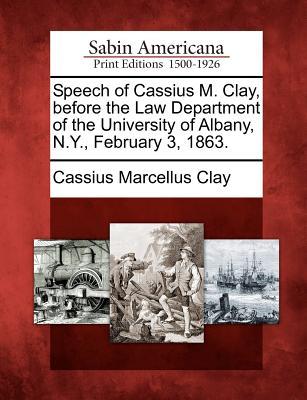
Cassius Marcellus Clay’s historic speech, delivered before the Law Department of the University of Albany in 1863, is a remarkable piece of American history that offers profound insights into the tumultuous era of the Civil War. Clay, a prominent abolitionist and political figure, used this platform to address pressing issues of his time.
In his speech, Clay passionately discusses the moral imperative of the abolitionist movement. He eloquently advocates for the end of slavery, framing it not only as a legal issue but as a moral stain on the nation’s conscience. Clay’s words resonate with the fervor of an activist deeply committed to the cause of freedom and equality.
One of the central themes of Clay’s speech is the idea of justice and its application in the context of slavery. He challenges the legal system and societal norms that permitted the institution of slavery to persist, calling for a reexamination of the principles upon which the nation was founded. Clay’s impassioned plea for justice and equality underscores the moral urgency of the abolitionist movement.
Moreover, Clay’s speech touches on the power of education and knowledge in shaping the course of history. He emphasizes the role of the legal profession in upholding justice and advocates for the education of future lawyers who would be instrumental in advancing the cause of freedom.
As readers delve into this historical document, they gain insight into the fervent debates and moral struggles of a nation torn apart by the Civil War. Clay’s speech serves as a powerful reminder of the enduring fight for justice and equality, even in the face of profound societal challenges.
In summary, Cassius Marcellus Clay’s speech delivered at the University of Albany in 1863 is a poignant and historically significant address that delves into the moral imperative of the abolitionist movement. It challenges prevailing legal norms, underscores the importance of justice, and emphasizes the role of education in shaping the course of history. Clay’s words continue to resonate as a testament to the enduring struggle for freedom and equality in the United States.
How to Talk to Anyone Series by Craig Jaeger
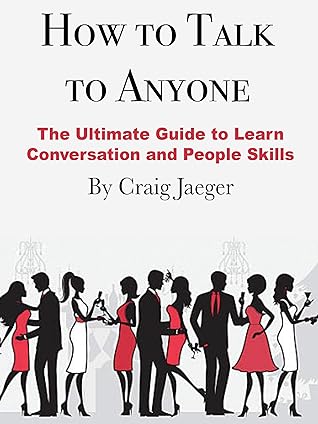

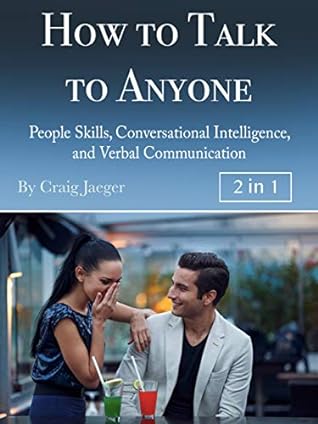

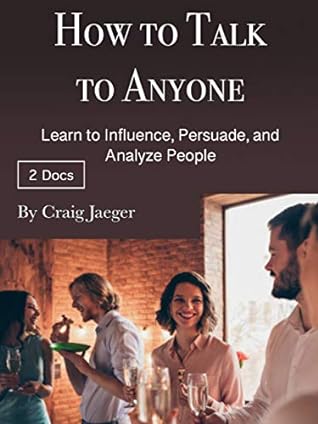
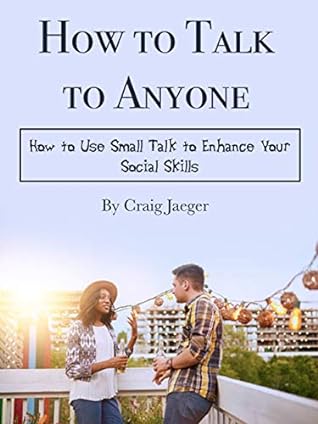
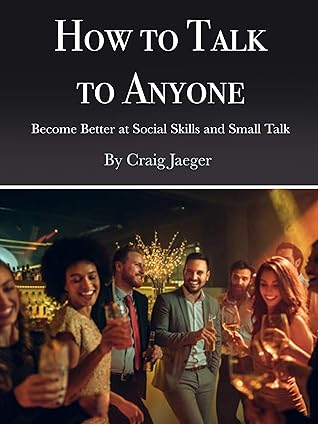
In “How to Talk to Anyone” by Craig Jaeger, readers are presented with an insightful guide to improving their social communication skills and enhancing their ability to connect with others. The book is a timely resource in an era where effective communication has become more vital than ever.
Jaeger delves into the intricacies of human interaction, offering practical advice on how to break the ice, engage in meaningful conversations, and leave a lasting impression. At its core, the book explores the art of conversation and its transformative power in both personal and professional contexts.
One of the central themes in the book is the importance of empathy and active listening. Jaeger emphasizes the need to genuinely understand and connect with others by tuning in to their perspectives and emotions. Through numerous real-life examples and practical exercises, readers are encouraged to become better listeners and more empathetic conversationalists.
Jaeger also explores the concept of body language and non-verbal cues in communication. He highlights the role of gestures, facial expressions, and posture in conveying messages and fostering rapport. Understanding the subtleties of non-verbal communication is a key component of the book’s approach to effective social interaction.
Furthermore, “How to Talk to Anyone” addresses the challenges of overcoming social anxiety and shyness. Jaeger provides strategies for building self-confidence and conquering fear, making it a valuable resource for those looking to navigate social situations with ease.
The book is not just about surface-level small talk but also delves into the nuances of deep and meaningful conversations. Jaeger encourages readers to ask open-ended questions, share personal stories, and create connections based on shared interests and experiences.
In summary, Craig Jaeger’s “How to Talk to Anyone” is a practical and insightful guide to improving social communication skills. By emphasizing empathy, active listening, and an understanding of non-verbal communication, the book equips readers with the tools they need to connect with others on a deeper level. Whether in personal or professional settings, this book serves as a valuable resource for anyone seeking to enhance their conversational abilities and build more meaningful relationships. Here are the 7 books in the series:
- How to Talk to Anyone: Become Better at Social Skills and Small Talk
- How to Talk to Anyone: How to Use Small Talk to Enhance Your Social Skills
- How to Talk to Anyone: Learn to Influence, Persuade, and Analyze People
- How to Talk to Anyone: Social Anxiety, Shyness, and Body Language Explained
- How to Talk to Anyone: People Skills, Conversational Intelligence, and Verbal Communication
- How to Talk to Anyone: Learn to Start a Conversation, Be Better at Small Talk, and Overcome Shyness
- How to Talk to Anyone: The Ultimate Guide to Learn Conversation and People Skills
Microsoft Research Digital Rights Management (DRM) Talk by Cory Doctorow

Cory Doctorow’s “Microsoft Research Digital Rights Management (DRM) Talk” is a transcript of a thought-provoking presentation that delves into the complex world of digital rights management and its implications for the future of technology and creativity.
Doctorow begins by examining the history of DRM and its origins in the entertainment industry’s efforts to combat piracy. He explores the tension between copyright holders’ desire to protect their intellectual property and consumers’ desire for open and unrestricted access to digital content.
One of the central themes of the talk is the potential dangers of DRM. Doctorow argues that DRM systems can limit innovation and creativity by locking down technology and content, preventing users from modifying or sharing it freely. He raises concerns about the long-term consequences of these restrictions on technology and culture.
Throughout the talk, Doctorow underscores the importance of user rights and the need for a balance between copyright protection and individual freedoms. He advocates for open standards and interoperability, which he believes can lead to a more vibrant and innovative digital ecosystem.
Moreover, Doctorow discusses the idea of “trusted computing” and its implications for user control over their devices. He warns against the potential for trusted computing to be used as a means of control and censorship, highlighting the importance of preserving user autonomy.
The talk also touches on the role of legislation and policy in shaping the future of DRM. Doctorow encourages active engagement with policymakers and advocates for user-friendly laws that protect digital rights.
In summary, Cory Doctorow’s “Microsoft Research Digital Rights Management (DRM) Talk” provides a thought-provoking exploration of the complex issues surrounding DRM and its impact on technology, culture, and individual freedoms. The talk underscores the need for a nuanced and balanced approach to digital rights and calls for a future in which technology empowers users rather than restricts them. It serves as a valuable resource for anyone interested in the evolving landscape of digital rights and technology.
Pocket Guide to Postmodernism by Andrew Colgan and Stephen Hicks
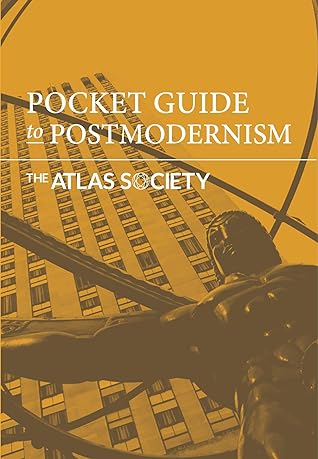
Andrew Colgan and Stephen Hicks’ “Pocket Guide to Postmodernism” is a concise and accessible overview of the complex and often enigmatic philosophical movement known as postmodernism. In this book, the authors provide readers with a clear and insightful introduction to the key ideas, figures, and debates within the realm of postmodern thought.
The central theme of the book revolves around the examination of postmodernism as a philosophical and cultural shift that challenges traditional concepts of truth, meaning, and authority. Colgan and Hicks delve into the fundamental tenets of postmodernism, including skepticism toward grand narratives, a focus on individual perspectives, and an emphasis on the social construction of reality.
One of the key messages in “Pocket Guide to Postmodernism” is the critique of metanarratives, or overarching explanations of history, knowledge, and society. The authors explore how postmodernism questions the validity and legitimacy of metanarratives, highlighting the diversity of human experiences and perspectives that shape our understanding of the world.
The book also delves into the theme of relativism, which is a central concept in postmodern thought. Colgan and Hicks discuss how postmodernism challenges the notion of objective truth and asserts that truth is often culturally and socially constructed. They examine the implications of this relativism for various fields, including art, science, and politics.
Furthermore, “Pocket Guide to Postmodernism” explores the impact of postmodernism on culture and society. The authors discuss how postmodern ideas have influenced art, literature, architecture, and even popular culture. They highlight the blurring of boundaries between high and low culture and the celebration of diversity in artistic expression.
Colgan and Hicks’ writing style is engaging and accessible, making complex philosophical concepts understandable to a wide audience. They use clear language and provide examples to illustrate key points, ensuring that readers can grasp the essence of postmodernism.
In conclusion, “Pocket Guide to Postmodernism” by Andrew Colgan and Stephen Hicks is a valuable resource for anyone seeking to understand the intricate and influential world of postmodern thought. Through its exploration of themes such as metanarratives, relativism, and cultural impact, the book offers readers a concise and insightful introduction to the key ideas and debates within postmodernism. It serves as a helpful guide for navigating the complexities of this philosophical movement and its profound implications for contemporary culture and society.
How to Negotiate Anything, Anywhere: Winning the Negotiating Game by Herb Cohen

Herb Cohen’s “How to Negotiate Anything, Anywhere: Winning the Negotiating Game” is a comprehensive guide to mastering the art of negotiation in a wide range of situations. In this book, Cohen draws from his extensive experience as a negotiation expert to provide readers with practical strategies and insights for achieving successful outcomes in negotiations.
The central theme of the book revolves around the idea that negotiation is a skill that can be learned and honed through practice and understanding. Cohen emphasizes the importance of preparation, communication, and flexibility in negotiation processes.
One of the key messages in “How to Negotiate Anything, Anywhere” is the concept of the “win-win” approach to negotiation. Cohen advocates for a collaborative style of negotiation where both parties can benefit and achieve their goals. He highlights the value of building long-term relationships through fair and mutually beneficial agreements.
The book also delves into the theme of effective communication in negotiation. Cohen provides readers with practical tips on active listening, asking the right questions, and using persuasive language to influence outcomes. He underscores the role of empathy and understanding in building rapport with negotiation counterparts.
Furthermore, “How to Negotiate Anything, Anywhere” explores the psychology of negotiation, including the dynamics of power and influence. Cohen discusses strategies for dealing with difficult or aggressive negotiators and offers insights into how to maintain composure and control during high-stakes negotiations.
Cohen’s writing style is engaging and pragmatic, with real-world examples and anecdotes that illustrate his negotiation principles. He provides readers with a structured approach to negotiation, from setting objectives to managing conflicts and closing deals.
In conclusion, “How to Negotiate Anything, Anywhere: Winning the Negotiating Game” by Herb Cohen is a valuable resource for anyone looking to enhance their negotiation skills and achieve successful outcomes in various contexts. Through its themes of collaborative negotiation, effective communication, and psychological insights, the book equips readers with the tools and knowledge to navigate the complexities of negotiation with confidence. It serves as a practical guide for individuals seeking to master the art of negotiation and build productive relationships in both personal and professional settings.
Charlie and the Chocolate Factory by Roald Dahl

Roald Dahl’s classic children’s novel, “Charlie and the Chocolate Factory,” is a whimsical and enchanting tale that takes readers on a delightful journey into a world of pure imagination. At its core, the story is a celebration of childhood wonder, the power of dreams, and the importance of good-heartedness.
The novel follows the adventures of young Charlie Bucket, a kind and humble boy from a modest background, who wins a golden ticket to visit the mysterious Willy Wonka’s chocolate factory. The central theme of the book is the contrast between Charlie’s simple, virtuous life and the extravagant, often absurd, world of Willy Wonka.
One of the most prominent themes in the story is the consequences of greed and selfishness. Dahl uses a cast of eccentric and flawed characters, the other ticket winners, to illustrate the vices that lead to their downfalls. From Augustus Gloop’s insatiable appetite to Veruca Salt’s spoiled entitlement, each child’s character flaw brings them into humorous and, at times, perilous situations.
On the flip side, Charlie Bucket represents the antithesis of these vices. He embodies the virtues of humility, gratitude, and selflessness. His unwavering goodness ultimately rewards him with the greatest prize of all: inheriting Willy Wonka’s factory and its secrets.
Dahl’s storytelling is laced with wit and humor, making the book an enjoyable read for both children and adults. The fantastical world of the chocolate factory, with its edible landscapes and quirky inventions, captures the imagination and leaves readers yearning for a taste of the extraordinary.
The idea of imagination and creativity also plays a significant role in the narrative. Willy Wonka, the enigmatic chocolatier, is portrayed as a creative genius who invents fantastical sweets and candy. His factory is a testament to the limitless possibilities of the human imagination.
In conclusion, “Charlie and the Chocolate Factory” by Roald Dahl is a timeless classic that weaves together themes of childhood innocence, the consequences of greed, and the power of imagination. Through its endearing characters and whimsical adventures, the book continues to captivate readers of all ages, reminding us of the enduring magic of storytelling and the joy of a good heart.
Charlie and the Great Glass Elevator by Roald Dahl

“Charlie and the Great Glass Elevator” by Roald Dahl picks up where its predecessor, “Charlie and the Chocolate Factory,” left off, whisking readers away on another whimsical adventure. This sequel takes Charlie Bucket and his eccentric companions on a journey beyond the confines of the chocolate factory, into outer space, and into encounters with extraterrestrial beings.
The central theme of this book is the continuation of the contrast between the ordinary and the extraordinary. As the story begins, Charlie, Willy Wonka, and the other characters find themselves in the Great Glass Elevator, a magical vehicle that can move in any direction, including up and out into space. This shift from the fantastical chocolate factory to the vastness of the cosmos underscores the theme of limitless possibilities and the uncharted territory of the imagination.
One of the prominent motifs in the novel is the idea of exploration and discovery. Dahl introduces the Vermicious Knids, mysterious and malevolent space creatures, and explores themes of intergalactic diplomacy and adventure. The characters must use their wits and resourcefulness to navigate these uncharted waters.
Additionally, the book continues to emphasize the importance of moral values and kindness, as Charlie’s integrity and good-hearted nature shine through even in the face of extraordinary challenges. His steadfastness and compassion serve as a moral compass for the story, reinforcing Dahl’s message that goodness prevails.
As with its predecessor, “Charlie and the Great Glass Elevator” is imbued with Dahl’s trademark wit and humor. The absurdity of the situations and characters adds an element of whimsy that keeps readers engaged and entertained.
In conclusion, Roald Dahl’s “Charlie and the Great Glass Elevator” takes readers on another enchanting journey, exploring themes of exploration, imagination, and the triumph of good over evil. With its delightful characters and imaginative storytelling, this sequel continues to captivate the imaginations of readers young and old, reminding us that the world is full of surprises and magic for those willing to explore it.
Matilda by Roald Dahl
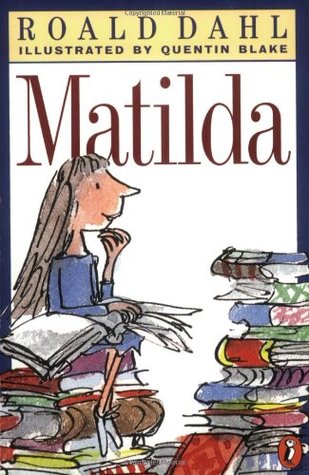
Roald Dahl’s “Matilda” is a heartwarming and empowering tale that celebrates the power of intelligence, kindness, and resilience, wrapped in Dahl’s signature whimsical storytelling.
The novel revolves around the extraordinary Matilda Wormwood, a young girl with an insatiable love for books and a remarkable intellect. Raised in a neglectful and often cruel family, Matilda discovers her unique telekinetic abilities and uses them to confront the injustices she faces.
One of the central themes in “Matilda” is the transformative power of education and literacy. Matilda’s voracious reading habits open up new worlds for her, providing an escape from her challenging home life and empowering her to take control of her destiny. Dahl underscores the idea that knowledge is a tool for empowerment and self-discovery.
The novel also delves into the importance of standing up against injustice and cruelty. Matilda’s resilience and determination inspire readers to find their inner strength and challenge oppressive forces, even when they seem insurmountable.
Through her encounters with the tyrannical headmistress Miss Trunchbull, Matilda showcases the value of courage in the face of adversity. Dahl masterfully weaves humor and suspense into these confrontations, making them both entertaining and empowering for readers.
Furthermore, “Matilda” explores the theme of the surrogate family. Miss Honey, Matilda’s kind-hearted teacher, serves as a maternal figure and mentor who nurtures Matilda’s potential. This theme of chosen family highlights the idea that love and support can be found outside of one’s biological family.
Dahl’s writing style is whimsical and engaging, filled with humor and wordplay that appeals to both young and adult readers. The characters, though often exaggerated, are relatable and endearing, making the story’s message all the more resonant.
In conclusion, “Matilda” by Roald Dahl is a timeless tale that celebrates the brilliance of the human mind, the importance of education, and the strength to overcome adversity. With its memorable characters and empowering themes, the book continues to captivate the hearts and minds of readers, encouraging them to embrace their unique talents and stand up for what is right.
James and the Giant Peach by Roald Dahl

Roald Dahl’s “James and the Giant Peach” is a whimsical and imaginative adventure that invites readers to embark on a fantastical journey with the titular character, James Henry Trotter. The novel is a testament to the power of imagination, friendship, and resilience.
At the heart of the story is the theme of transformation. James, an orphan living with his cruel aunts, escapes his bleak reality when he discovers a gigantic, magical peach that grows in his garden. As the peach grows, it becomes a symbol of hope and renewal for James. When he enters the peach and befriends a group of giant, anthropomorphic insects, his life takes a dramatic turn, and he begins a journey of self-discovery and empowerment.
Friendship is another central theme in the book. The unlikely companionship that James forms with the insects—Miss Spider, Old-Green-Grasshopper, Centipede, Ladybug, Glow-worm, and Earthworm—illustrates the idea that genuine friendships can be forged across differences. Each insect brings unique qualities and strengths to the group, highlighting the value of diversity and teamwork.
Throughout the story, Dahl explores the idea that challenges can lead to personal growth and transformation. As James and his insect friends face a series of perilous obstacles, they learn to adapt, problem-solve, and rely on one another. This theme of resilience resonates with readers of all ages, inspiring them to overcome adversity with creativity and determination.
Dahl’s writing style in “James and the Giant Peach” is filled with vivid descriptions and playful language that engage readers’ imaginations. The fantastical elements, such as the enormous peach and the larger-than-life insects, create a sense of wonder and magic that captivates young and old alike.
The book’s overarching message is one of hope and the belief that even in the most challenging circumstances, there is room for wonder, adventure, and the possibility of a brighter future.
In conclusion, “James and the Giant Peach” by Roald Dahl is a timeless tale that celebrates the transformative power of friendship, imagination, and resilience. Through its whimsical storytelling and memorable characters, the book continues to inspire readers to embrace their own unique journeys and to find hope and joy even in the most unexpected places.
The Pact by Jodi Picoult
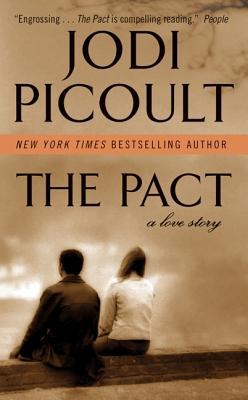
Jodi Picoult’s “The Pact” is a gripping and emotionally charged novel that delves into themes of love, tragedy, family, and the complex dynamics that bind people together. Set against the backdrop of a heartbreaking incident, the book explores the intricacies of human relationships and the moral dilemmas that arise in its wake.
The central premise of the story revolves around two families, the Golds and the Hartes, who have been intertwined for generations. At the heart of the novel is the tragic death of Chris Harte, which initially appears to be a suicide. However, as the story unfolds, it becomes clear that there may be more to the tragedy than meets the eye.
One of the primary themes in “The Pact” is the idea of unconditional love between parents and their children. The story portrays the deep, often tumultuous bond between Emily Gold and Chris Harte and their respective families. It delves into the lengths parents are willing to go to protect and defend their children, even when faced with painful truths.
The novel also explores the notion of secrets and the consequences of keeping them hidden. As the investigation into Chris’s death progresses, dark family secrets and hidden truths come to light, causing fractures in the relationships among the characters. Picoult skillfully portrays the moral and emotional dilemmas faced by the characters as they grapple with the consequences of their actions.
Throughout the book, the author raises thought-provoking questions about the nature of love, loyalty, and sacrifice. The choices made by the characters are not always straightforward, and their motivations are complex and deeply human.
Jodi Picoult’s writing style in “The Pact” is characterized by its depth and emotional intensity. She weaves a compelling narrative that keeps readers engaged while exploring the nuances of the characters’ experiences and emotions.
In conclusion, “The Pact” by Jodi Picoult is a powerful and emotionally charged exploration of love, tragedy, and the complexities of human relationships. Through its well-drawn characters and thought-provoking themes, the novel invites readers to reflect on the nature of love and the moral dilemmas that can arise within families. It is a testament to the author’s ability to craft compelling stories that resonate with readers on a deeply emotional level.
How to Sit by Thich Nhat Hanh

Thich Nhat Hanh’s “How to Sit” is a succinct and profound guide to the art of mindful meditation and finding peace within oneself. In this slim volume, the renowned Zen master shares timeless wisdom and practical techniques for achieving tranquility through the simple act of sitting.
The book’s central theme revolves around the transformative power of mindfulness. Thich Nhat Hanh emphasizes the importance of being fully present in the moment, paying attention to our breath, body, and surroundings. Through this focused awareness, readers are guided toward a state of inner calm and clarity.
One of the key messages in “How to Sit” is the idea that peace and stillness can be found in everyday moments. Thich Nhat Hanh suggests that by approaching even the act of sitting with mindfulness, we can cultivate a deep sense of peace that extends into all aspects of our lives. This theme encourages readers to embrace mindfulness as a way of life rather than a solitary practice.
The book also touches on the interconnectedness of all beings. Thich Nhat Hanh reminds readers that our well-being is intrinsically tied to the well-being of others and the world around us. Through the practice of mindfulness, we can develop compassion and empathy, fostering a sense of unity with all living things.
Throughout “How to Sit,” the author provides practical guidance on meditation techniques, including breath awareness and visualization. He offers insights into dealing with physical discomfort and restlessness during meditation, making the practice accessible to individuals of all levels of experience.
Thich Nhat Hanh’s writing style is gentle and compassionate, reflecting the essence of his teachings. His words have a soothing quality that encourages readers to slow down, reflect, and incorporate mindfulness into their daily lives.
In conclusion, “How to Sit” by Thich Nhat Hanh is a profound exploration of the transformative power of mindfulness and the art of finding peace in the present moment. Through its themes of mindfulness, interconnectedness, and compassion, the book offers practical guidance for those seeking to cultivate inner tranquility and live more fully in each moment. It serves as a valuable resource for anyone on a journey toward greater self-awareness and inner peace.
The Wit of Cricket by Barry Johnston

Barry Johnston’s “The Wit of Cricket” is a delightful compilation of anecdotes, quotes, and humorous tales from the world of cricket. Beyond the boundaries of the game itself, the book captures the wit and camaraderie that have made cricket an enduring and beloved sport.
At the heart of the book is the theme of humor and its role in the cricketing world. Johnston curates a collection of witty remarks, amusing incidents, and lighthearted banter that have graced the sport throughout its history. These moments of levity not only entertain but also offer a glimpse into the unique culture of cricket and the camaraderie that exists among players and fans.
One of the prominent motifs in “The Wit of Cricket” is the idea of sportsmanship and fair play. The book celebrates the values of respect and integrity that underpin cricket, highlighting instances where players displayed grace in victory and defeat. It underscores the notion that cricket is more than just a game; it is a reflection of character and the spirit of sportsmanship.
Throughout the book, Johnston showcases the colorful personalities and eccentricities that have made cricket memorable. From legendary players to witty commentators, the book brings to life the diverse characters who have contributed to the sport’s rich tapestry. This theme of character and individuality adds depth to the book’s exploration of cricket’s unique charm.
Johnston’s writing style is engaging and humorous, reflecting the wit and banter that are prevalent in the cricketing world. The anecdotes and quotes are skillfully woven together, creating a narrative that keeps readers entertained and amused.
In conclusion, “The Wit of Cricket” by Barry Johnston is a delightful tribute to the humor, camaraderie, and character that define the world of cricket. Through its exploration of witty remarks, amusing incidents, and the spirit of sportsmanship, the book captures the essence of the sport and its enduring appeal. Whether you are a seasoned cricket fan or a newcomer to the game, this book is a charming and entertaining read that celebrates the wit and charm of cricket.
TED Talks: Storytelling Techniques by Akash Karia
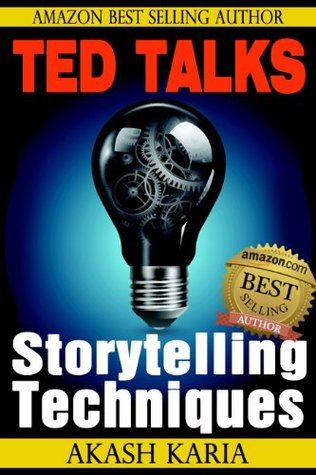
Akash Karia’s “TED Talks: Storytelling Techniques” is a practical and insightful guide to mastering the art of storytelling in public speaking. Drawing inspiration from the world-renowned TED Talks platform, the book offers valuable strategies for crafting compelling narratives and engaging your audience effectively.
The central theme of the book revolves around the power of storytelling as a communication tool. Karia emphasizes that stories are a universal language that connects people on an emotional level, making complex ideas more accessible and memorable. The book encourages readers to harness the narrative potential within them to captivate and inspire their listeners.
One of the key themes explored in “TED Talks: Storytelling Techniques” is the importance of authenticity in storytelling. Karia emphasizes that genuine stories that resonate with the speaker’s personal experiences and emotions are the most compelling. The book guides readers in uncovering their own unique narratives and crafting them into impactful speeches.
The book also delves into the structure of a compelling story, highlighting the importance of a strong beginning, middle, and end. Karia provides practical tips on how to hook the audience from the start, build tension, and deliver a memorable conclusion. These storytelling techniques are tailored to captivate audiences and hold their attention.
Furthermore, Karia addresses the role of emotion in storytelling. He encourages speakers to infuse their narratives with genuine feelings, as emotional resonance is a powerful tool for connecting with the audience. The book offers guidance on how to convey emotions effectively and elicit a response from listeners.
Throughout “TED Talks: Storytelling Techniques,” Karia incorporates examples from actual TED Talks, illustrating how renowned speakers have effectively employed storytelling to convey their messages. This practical approach allows readers to see the storytelling techniques in action and provides inspiration for their own presentations.
In conclusion, “TED Talks: Storytelling Techniques” by Akash Karia is a valuable resource for anyone looking to enhance their public speaking skills and captivate their audience through storytelling. By emphasizing authenticity, structure, and emotional resonance, the book equips readers with the tools to craft compelling narratives that leave a lasting impact. Whether you are a seasoned speaker or just starting your journey in public speaking, this book offers practical insights to elevate your storytelling abilities.
Fauci: Expect the Unexpected by Anthony Fauci
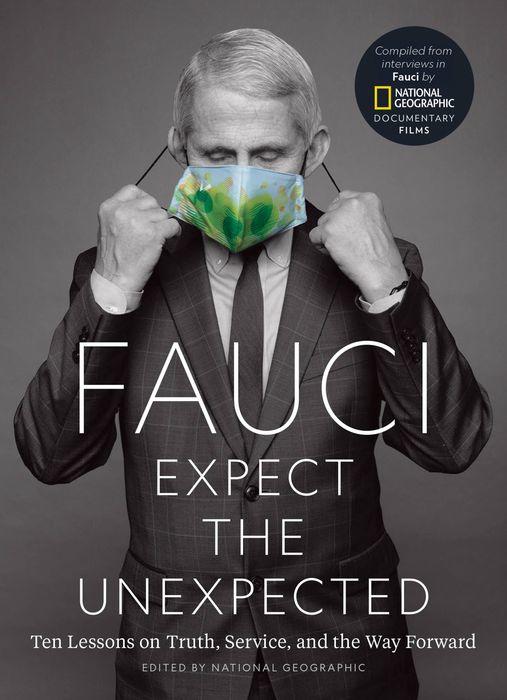
“Anthony Fauci’s “Expect the Unexpected” is a revealing and insightful memoir that offers a firsthand account of Dr. Fauci’s extraordinary career as a prominent immunologist and his pivotal role in addressing public health crises, particularly the COVID-19 pandemic.
The central theme of the book is the importance of science, public health, and preparedness in the face of unexpected challenges. Dr. Fauci shares his experiences working at the National Institutes of Health (NIH) and his involvement in combating various infectious diseases, from HIV/AIDS to Ebola and, most notably, the coronavirus.
One of the key messages in “Expect the Unexpected” is the significance of evidence-based decision-making and the value of expertise in public health. Dr. Fauci emphasizes the critical role that science plays in informing public policy and the need for transparent communication with the public, even in times of uncertainty.
The book also explores the challenges and obstacles Dr. Fauci faced throughout his career. He candidly discusses the resistance to scientific evidence, political pressures, and personal threats that he encountered, highlighting the dedication and resilience required to navigate the complex landscape of public health.
Furthermore, Dr. Fauci reflects on the importance of global collaboration in addressing pandemics. He underscores the need for countries to work together to control the spread of infectious diseases and develop effective vaccines and treatments.
Throughout the memoir, Dr. Fauci offers insights into his personal life, including the support of his family and the sacrifices made in pursuit of his mission to protect public health. These personal anecdotes humanize the renowned scientist and provide a glimpse into the personal values that have guided his career.
In conclusion, “Fauci: Expect the Unexpected” by Anthony Fauci is a timely and informative memoir that sheds light on the challenges and triumphs of a leading immunologist during critical moments in public health history. Through its themes of science, evidence-based decision-making, and global collaboration, the book serves as an important resource for readers interested in the intersection of science, public health, and leadership in times of crisis. It offers a unique perspective on the ongoing fight against infectious diseases and the resilience of the human spirit in the face of adversity.
Time for Outrage: Indignez-vous! by Stéphane Hessel
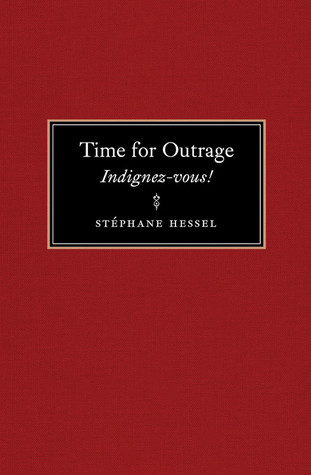
Stéphane Hessel’s “Time for Outrage: Indignez-vous!” is a passionate and concise call to action that resonates with readers by urging them to stand up against social injustices and inequality. Originally published as a pamphlet, this small yet impactful book became a global phenomenon, inspiring individuals to take a stand for justice and human rights.
The central theme of “Time for Outrage” is the importance of indignation as a catalyst for positive change. Hessel argues that feeling outrage in the face of injustice is not only natural but also necessary for individuals to mobilize and advocate for a fair and equitable society.
One of the key messages in the book is the idea that complacency and indifference are the enemies of progress. Hessel encourages readers to question the status quo, to speak out against oppression, and to actively engage in social and political issues. He reminds us that change is possible when individuals unite with a shared sense of moral responsibility.
The book also emphasizes the importance of human rights, drawing from Hessel’s own experiences as a member of the French Resistance during World War II and one of the authors of the Universal Declaration of Human Rights. He underscores the need to protect and defend these rights as a cornerstone of a just society.
Furthermore, Hessel advocates for nonviolent resistance and civil disobedience as effective means of bringing about change. He points to historical examples of successful movements, such as the civil rights movement in the United States and the anti-apartheid struggle in South Africa, as evidence of the power of peaceful protest.
Hessel’s writing style is straightforward and impassioned, reflecting his conviction and urgency. He calls on readers to embrace their role as engaged citizens and to channel their indignation into positive action.
In conclusion, “Time for Outrage: Indignez-vous!” by Stéphane Hessel is a rallying cry for social justice and human rights. Through its themes of indignation, activism, and the importance of human rights, the book inspires readers to be agents of change and to take a stand against injustice. It serves as a reminder that the voice of an individual, fueled by a sense of outrage, can contribute to a more just and equitable world.
Marigold and Rose by Louise Glück

Louise Glück’s “Marigold and Rose” is a poetic journey that explores the complexities of human emotion, the passage of time, and the interconnectedness of the natural world. Through a series of finely crafted poems, Glück invites readers to contemplate the ever-shifting landscapes of the heart and the world.
The central theme of the collection is the transient nature of existence and the inevitability of change. Glück’s poems are imbued with a sense of impermanence, as she muses on the fleeting beauty of flowers, the changing seasons, and the delicate balance between life and death. The title itself, “Marigold and Rose,” evokes images of vibrant blooms that wither and fade, serving as a metaphor for the ephemeral nature of life.
One of the key messages in the collection is the idea of transformation and renewal. Glück’s poems often depict the cycles of nature, from the rebirth of spring to the decay of autumn, mirroring the cycles of human experience. She suggests that even in the face of loss and mortality, there is a possibility of renewal and growth.
The collection also delves into the theme of memory and its role in shaping our understanding of the past and the present. Glück’s evocative language and imagery invite readers to reflect on the power of memory to both haunt and heal, to connect us to the past and anchor us in the present.
Furthermore, “Marigold and Rose” explores the concept of interconnectedness, highlighting the ways in which human emotions and experiences are intertwined with the natural world. Glück’s poems often blur the boundaries between the inner and outer landscapes, suggesting that our inner lives are deeply influenced by the rhythms of nature.
Glück’s poetic style is characterized by its precision and economy of language. Her poems are beautifully crafted, with each word and line carefully chosen to evoke emotion and imagery. Her use of metaphor and symbolism adds depth and richness to the collection.
In conclusion, “Marigold and Rose” by Louise Glück is a poetic meditation on the transience of life, the power of memory, and the interconnectedness of the human experience with the natural world. Through its themes of impermanence, renewal, and interconnectedness, the collection invites readers to contemplate the beauty and fragility of existence. It is a testament to Glück’s mastery of the poetic form and her ability to evoke profound emotions and insights through her words.
I Hate Men by Pauline Harmange

Pauline Harmange’s “I Hate Men” is a provocative and thought-provoking feminist manifesto that challenges societal norms and expectations surrounding gender and relationships. In this concise yet impactful essay, Harmange takes a critical look at the patriarchy and its impact on women’s lives.
The central theme of the book is the critique of patriarchy and its role in perpetuating gender inequalities. Harmange explores how societal norms and expectations have historically favored men while suppressing the voices and agency of women. She argues that women’s anger and frustration with these imbalances are valid and should not be silenced or dismissed.
One of the key messages in “I Hate Men” is the importance of reclaiming one’s voice and autonomy. Harmange encourages women to embrace their anger and to reject the societal pressure to be accommodating and submissive. She calls for a reevaluation of power dynamics in relationships and a rejection of toxic masculinity.
The book also delves into the theme of solidarity among women. Harmange highlights the importance of women supporting each other and working together to challenge the status quo. She advocates for the dismantling of gender stereotypes and the celebration of diverse forms of femininity.
Furthermore, “I Hate Men” explores the idea of reclaiming personal boundaries and autonomy in relationships. Harmange challenges the notion that women should tolerate mistreatment or subjugation in the name of love. She encourages readers to prioritize their own well-being and happiness.
Harmange’s writing style is sharp and unapologetic, reflecting the urgency of her message. Her words are a call to action, inviting readers to question and challenge the systems and beliefs that perpetuate gender inequalities.
In conclusion, “I Hate Men” by Pauline Harmange is a bold and thought-provoking exploration of feminism, patriarchy, and the importance of women’s voices and agency. Through its themes of gender inequality, reclaiming autonomy, and solidarity among women, the book challenges readers to confront societal norms and expectations and to embrace their own power and anger. It serves as a rallying cry for gender equality and a reminder that women’s anger and frustration are valid and necessary catalysts for change.
Anatomy of the State by Murray N. Rothbard
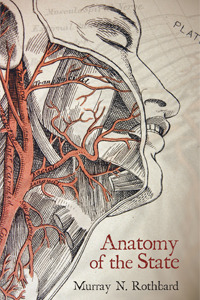
Murray N. Rothbard’s “Anatomy of the State” is a concise and incisive exploration of the nature and function of the state, offering a critical perspective on the role of government in society. In this essay, Rothbard challenges conventional notions of the state and its legitimacy.
The central theme of the book revolves around the idea that the state is fundamentally an institution of coercion and force. Rothbard argues that the state maintains its authority through the threat of violence, making it inherently incompatible with individual liberty and voluntary cooperation.
One of the key messages in “Anatomy of the State” is the critique of political authority. Rothbard questions the moral legitimacy of the state’s claim to authority over individuals and their property. He asserts that government’s monopoly on the use of force allows it to impose its will on citizens, often at the expense of their rights and freedoms.
The book also delves into the theme of the state’s economic role. Rothbard argues that government intervention in the economy, such as taxation and regulation, often benefits specific interest groups at the expense of the general population. He advocates for a free-market approach that emphasizes voluntary exchange and individual choice.
Furthermore, “Anatomy of the State” explores the consequences of the state’s influence on foreign policy and war. Rothbard critiques the state’s tendency to engage in conflict and imperialism, often driven by the interests of ruling elites rather than the well-being of the citizens.
Rothbard’s writing style is clear and persuasive, presenting his arguments in a logical and compelling manner. His critique of the state challenges readers to reexamine their assumptions about government and its role in society.
In conclusion, “Anatomy of the State” by Murray N. Rothbard is a thought-provoking and critical examination of the nature and function of government. Through its themes of coercion, political authority, economic intervention, and foreign policy, the book invites readers to reconsider their views on the state and its impact on individual liberty and society as a whole. It serves as a powerful reminder of the need for vigilance in safeguarding individual rights and freedoms in the face of state power.
In Praise of Shadows by Jun’ichirō Tanizaki
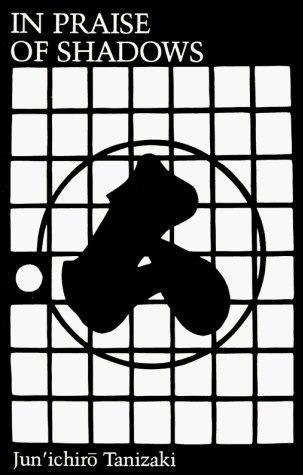
Jun’ichirō Tanizaki’s “In Praise of Shadows” is a contemplative and poetic essay that explores the aesthetics of traditional Japanese culture, emphasizing the beauty of shadow, subtlety, and imperfection. In this essay, Tanizaki invites readers to appreciate the nuances of Japanese aesthetics and contrast them with the bright, modern world.
The central theme of the book revolves around the concept of beauty in darkness and the value of understatement. Tanizaki contrasts the Western preference for bright, even illumination with the Japanese appreciation for shadow, suggesting that the interplay of light and dark creates a sense of depth and mystery that is more captivating.
One of the key messages in “In Praise of Shadows” is the idea that modernization and technology have brought about a loss of traditional aesthetics. Tanizaki laments the replacement of natural materials like paper and wood with synthetic materials, which he believes have diminished the sensory richness of daily life.
The essay also delves into the theme of cultural identity. Tanizaki reflects on the influence of Western culture on Japan and how it has shaped not only the physical environment but also the way people perceive beauty and aesthetics. He encourages readers to preserve and appreciate the unique qualities of their own culture.
Furthermore, “In Praise of Shadows” explores the role of sensory experiences in our lives. Tanizaki extols the virtues of tactile and sensory pleasures, from the texture of traditional Japanese paper to the aesthetics of traditional Japanese cuisine. He suggests that these sensory experiences contribute to a deeper connection with one’s surroundings.
Tanizaki’s writing style is evocative and reflective, filled with vivid descriptions and personal anecdotes. His prose is like a quiet meditation, inviting readers to slow down and savor the nuances of the world around them.
In conclusion, “In Praise of Shadows” by Jun’ichirō Tanizaki is a contemplative and philosophical exploration of aesthetics, culture, and sensory experience. Through its themes of beauty in darkness, cultural identity, and the value of tradition, the essay invites readers to reconsider their perceptions of beauty and to appreciate the subtleties of the world. It serves as a reminder of the enduring appeal of traditional aesthetics and the importance of preserving cultural heritage in an ever-changing world.
Rich Dad’s Fundamentals of Technical Trading by Robert Kiyosaki
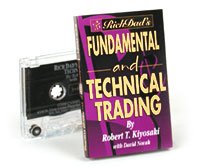
Robert Kiyosaki’s “Rich Dad’s Fundamentals of Technical Trading” is a practical guide to understanding the world of technical analysis in the realm of investing and trading. In this book, Kiyosaki shares insights and strategies for navigating the complex world of financial markets using technical indicators.
The central theme of the book revolves around the importance of acquiring financial knowledge and literacy. Kiyosaki emphasizes the value of understanding how financial markets work and how to make informed investment decisions. He argues that financial education is a key factor in achieving financial independence.
One of the key messages in “Rich Dad’s Fundamentals of Technical Trading” is the concept of using technical analysis to assess market trends and make trading decisions. Kiyosaki introduces readers to various technical indicators, chart patterns, and trading strategies. He highlights the significance of analyzing historical price and volume data to identify potential entry and exit points.
The book also delves into the theme of risk management and the importance of preserving capital. Kiyosaki discusses strategies for managing risk, including setting stop-loss orders and diversifying one’s investment portfolio. He underscores the need for discipline and patience in trading and investing.
Furthermore, “Rich Dad’s Fundamentals of Technical Trading” explores the psychology of trading and the role of emotions in decision-making. Kiyosaki advises readers to develop a mindset of discipline and detachment from emotional reactions to market fluctuations. He encourages investors to focus on long-term goals and avoid impulsive trading.
Kiyosaki’s writing style is straightforward and accessible, making complex financial concepts understandable to a broad audience. He uses real-life examples and case studies to illustrate his points and provide practical insights.
In conclusion, “Rich Dad’s Fundamentals of Technical Trading” by Robert Kiyosaki is a comprehensive introduction to the world of technical analysis and trading strategies. Through its themes of financial education, risk management, and the psychology of trading, the book equips readers with the knowledge and tools to make informed decisions in the financial markets. It serves as a valuable resource for those seeking to enhance their financial literacy and embark on their journey toward financial independence.
The Jungle Book by Rudyard Kipling
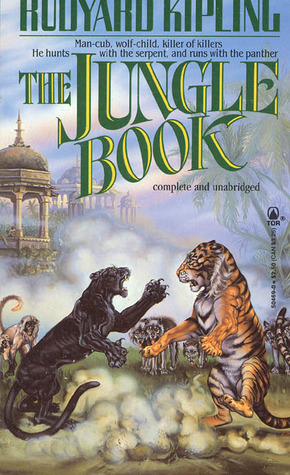
Rudyard Kipling’s “The Jungle Book” is a timeless collection of stories that transport readers into the heart of the Indian jungle, where the animal kingdom comes alive with wisdom, adventure, and moral lessons. The book is a delightful tapestry of tales that explore the themes of nature, identity, and the delicate balance between civilization and the wild.
The central theme of “The Jungle Book” centers on the concept of identity and belonging. The protagonist, Mowgli, is a young boy raised by wolves in the jungle. His journey of self-discovery and struggle to find his place in both the animal and human worlds serves as a poignant exploration of the complexities of identity.
One of the key messages in the book is the importance of harmony with nature. Through the various animal characters and their interactions with Mowgli, Kipling underscores the idea that the jungle is a world of its own, governed by its own rules and customs. The jungle represents both a place of danger and a source of wisdom, teaching Mowgli valuable life lessons.
The book also delves into the theme of the law of the jungle, which is a code of conduct that governs the relationships and behavior of the animals. Kipling explores the concept of justice and survival in a world where the strong protect the weak, and where loyalty and honor hold great significance.
Furthermore, “The Jungle Book” touches on the theme of storytelling and oral tradition. Many of the stories are framed as fables and moral tales shared among the animals. This reflects the importance of storytelling in passing down knowledge, values, and cultural traditions.
Kipling’s writing style is rich with vivid descriptions and evocative language that immerses readers in the lush and vibrant world of the jungle. His ability to create memorable animal characters with distinct personalities and voices adds depth and charm to the narrative.
In conclusion, “The Jungle Book” by Rudyard Kipling is a classic work of literature that continues to captivate readers of all ages. Through its themes of identity, nature, and the law of the jungle, the book offers a captivating journey into a world where animals speak, adventures unfold, and life lessons abound. It serves as a timeless exploration of the human connection to the natural world and the enduring power of storytelling.
The Man Who Would Be King by Rudyard Kipling

Rudyard Kipling’s “The Man Who Would Be King” is a captivating novella that weaves a tale of adventure, ambition, and the consequences of unchecked desires. Set against the backdrop of British colonial India and the rugged landscapes of the Kafiristan region (present-day Afghanistan), this story explores themes of imperialism, cultural clash, and the pursuit of power.
The central theme of the novella revolves around the allure of power and the lengths to which individuals may go to attain it. The two protagonists, Daniel Dravot and Peachey Carnehan, are former British soldiers who embark on a daring journey to become kings in a remote and isolated region. Their ambition drives them to manipulate and exploit the local tribes, ultimately leading to a dramatic and tragic climax.
One of the key messages in “The Man Who Would Be King” is the danger of cultural arrogance and the clash of civilizations. Dravot and Carnehan’s attempt to impose British customs and beliefs on the indigenous people of Kafiristan results in chaos and upheaval. The novella serves as a cautionary tale about the consequences of cultural insensitivity and the arrogance of colonialism.
The novella also delves into the theme of the outsider’s perspective. Through the character of the narrator, Kipling offers a lens through which readers can view the events unfolding in Kafiristan. The narrator represents the outsider’s curiosity and fascination with the exotic and unknown, highlighting the complexities of cultural exchange.
Furthermore, “The Man Who Would Be King” explores the human desire for greatness and the quest for immortality. Dravot and Carnehan’s dream of becoming kings is driven by a longing for power and recognition that transcends their humble origins. This universal theme of ambition and the pursuit of a legacy resonates with readers.
Kipling’s writing style in this novella is vivid and evocative, transporting readers to the rugged and mysterious landscapes of Kafiristan. His exploration of character psychology and the consequences of ambition is masterfully executed, creating a narrative that lingers in the mind long after the story concludes.
In conclusion, “The Man Who Would Be King” by Rudyard Kipling is a thought-provoking exploration of ambition, power, and cultural clash. Through its themes of imperialism, cultural arrogance, and the pursuit of greatness, the novella offers readers a complex and engaging narrative that invites reflection on the consequences of unchecked desires. It stands as a timeless work of literature that continues to resonate with audiences today.
Phew! There you go! All the new books I read in 2023 reviewed in a minute for each. I was consciously choosing books that I wouldn’t have read in an attempt to explore diverse subjects. I chose to read shorter books to explore different forms of writing.
Reading books wasn’t that big of a focus this year because I engaged myself in exploring other avenues and activities which I will share with you in my 2023 life update. I still managed to read one book a week and maintained by streak for the 5th year in a row.
I will be back again with the 2024 reading recap when the time comes. Until then, let me know what books you read this year. See you next time!

